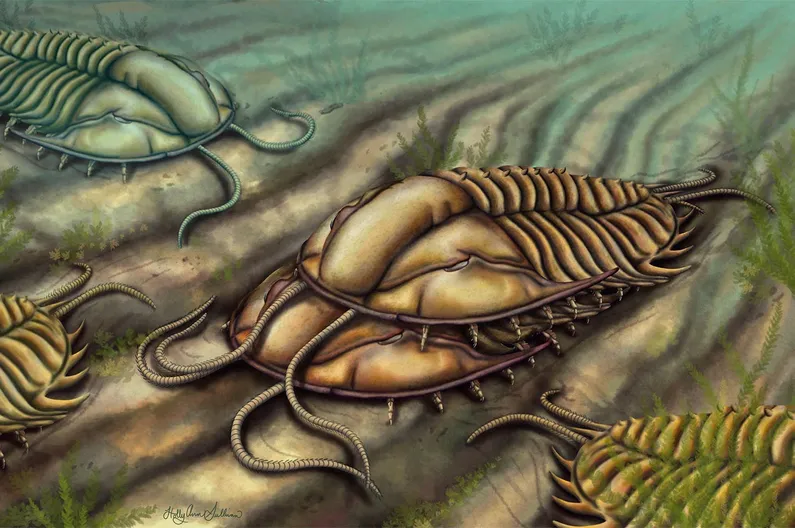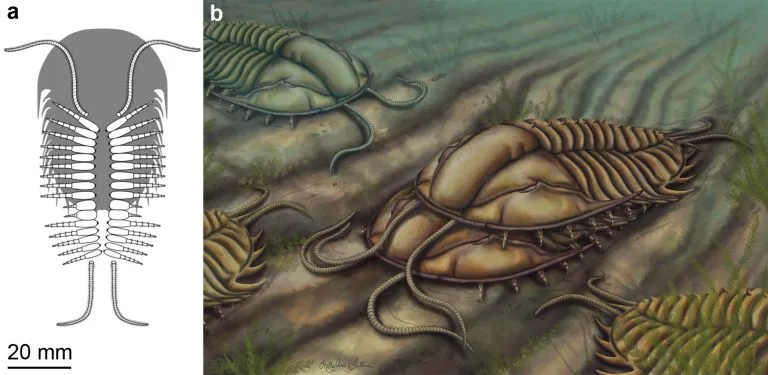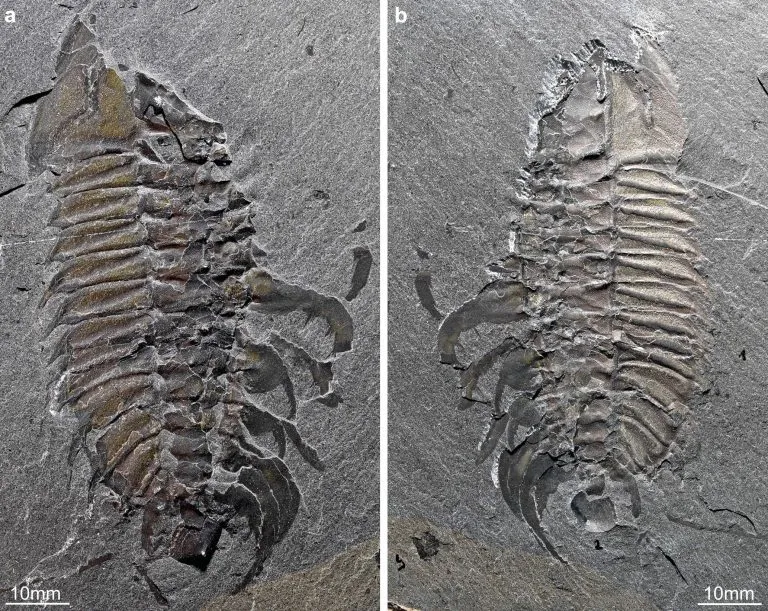Fossils can tell scientists a lot about animals, such as their form, their environment, and their position in the tree of life. But one thing that is difficult to observe in the fossil record is the reproductive behavior of animals Researchers need a very unique preserved fossil to reveal the secrets behind the reproductive strategies of some of the earliest complex animals

In a new study published in the journal Geology on May 6, doctoral students Sarah R. losso and Javier Ortega Hern á ndez from the Department of organic and evolutionary biology of Harvard University revealed the mating behavior of Trilobites from the Middle Cambrian fossil olenoides serratus.
Trilobites are a group of arthropods from 520-250 million years ago, which may be close to the branching points of two main arthropod groups, namely, clawpods (horseshoe crab, spider and scorpion) and polypods (centipede, crab and insect). They dominate the Paleozoic fossil record, are found on all continents, and have more than 20000 described species. They are named for the trefoil appearance of their durable calcite rich exoskeleton, which is easy to preserve and produces a good fossil record. The morphology of trilobites has been widely studied, but little is known about the reproduction of trilobites. Rare examples include unfertilized eggs found below the head of possibly female specimens and groups of fertilized eggs deposited in sediments during the Cambrian period. The researchers hypothesized that large groups of trilobite fossils together may represent large-scale molting and mating events, similar to those observed in living marine species, such as Limulus polyphemus. However, the reproductive behavior of trilobites, including their mating and fertilization, is actually still unknown.

Losso is making a comprehensive redescription of the morphology of olenoides. He studied and imaged every specimen of olenoides serratus in the invertebrate paleontology collection of the Royal Museum of Ontario, the geological survey of Canada and the Smithsonian Institution. O. Serratus is known to come from several locations in North America, but all specimens with appendages were collected from the Burgess Shale in British Columbia, Canada. Unlike exoskeletons, appendages (antennae, legs and gills) are not often preserved because they are not reinforced with calcite. The preservation of appendages requires unique conditions at the time of burial, which exist in Burgess Shale and other rare sites with special fossil preservation. While examining a well preserved fossil from the Burgess Shale in the Royal Museum of Ontario, losso found a specially modified gripper appendage in the middle of her body similar to that of an adult male horseshoe crab, suggesting a similar mating strategy.
Losso examined 65 known specimens with preserved appendages. The legs of 23 specimens were preserved in the correct parts of the body, where appendages similar to grippers were found; However, due to its complete exoskeleton, even if there is a gripper attachment, it will not be seen because of its reduced size. Four specimens provided clear views of the 10th and 11th pairs of appendages, but only one specimen of O. serratus showed that its appendages were modified into grippers. The other three specimens have visible appendage pairs and have a more traditional leg like appearance.
Although the O. serratus specimen with gripper lacks half of the exoskeleton, it is beneficial for the researchers. Losso said: "This specimen is really unique. It is well preserved enough to show the special details of the appendage transformed into a gripper, but it is broken, so we can actually see these reduced limbs, otherwise they will be covered by the dorsal exoskeleton. Ironically, if this specimen had been better preserved and had a complete dorsal exoskeleton, we wouldn't have as much information about its limbs as we do now. ”
Losso measured various parts of the reduced appendages several times and compared them with appendages in the same specimen body and known appendages in different olenoides in the same position. This shows that the smaller appendages have a unique shape, which is only known in this specimen. Losso then studied the special appendages of other living Arthropods for comparison and to understand what these appendages can be used for.

There are thousands of trilobite species with a history of 200 million years. However, it is difficult to know reproductive behavior without a close living relative. Limulus, although not closely related to trilobites, is often used as a modern analog because they look like trilobites on the surface, making it a useful comparison. Horseshoe crab, like Limulus, is a marine arthropod known for its large-scale spawning activities along the coast of Delaware and Cape Cod.
Gripper is a special hook like appendage often found in male arthropods. During mating, the male grasps the female with a gripper. Different groups have evolved this appendage in different parts of the body according to the exact mating mode of the group. Both branchopods and horseshoe crabs have evolved grippers, but their functions are different according to the female exoskeleton.
"We know it can't be for chewing, because these appendages are not near the head or mouth, they're in the middle of the body. This shows the sexual dimorphism of trilobites, but in this case, it's only expressed on the appendages. This tells us more about trilobites' reproduction and how they will mate, which was difficult to understand before and is very speculative based on modern analogies," losso said
"There are few cases where fossils directly inform reproductive ecology and behavior, especially in such ancient fossils. In this case, because there is a very special structure adapted to this function, it is possible to make this special argument, especially trilobites," Ortega Hern á ndez said. "This is indeed the first time that it is possible to show that these limbs have been so severely modified for this function. And it provides strong evidence that Limulus, or Limulus like behavior, existed entirely through fusion in the Cambrian. Therefore, it really helps us understand how these animals lived millions of years ago."